
For less noise in schools
According to surveys conducted at Washington University School of Medicine in St. Louis, 1 in 20 children has one ear affected by hearing impairment. Up to 16% of adult Europeans suffer from such a significant decline in hearing that it can negatively impact their daily lives. The increasing burden of noise is a problem that we must fight from an early age, already in school desks…
Peak sound pressure levels (LCpeak) reached the following values:
In contrast, WHO recommends that the sound intensity in the environments we occupy during the day be at a level of 50 dB.
The sound absorption coefficient α is a fundamental parameter determining the sound absorption capability of building products. Its values range from 0 to 1. A value of 1 means that the sound has been completely absorbed, and a value of 0 means that it has been totally reflected. - In accordance with the international standard ISO 11654, sound absorption is described using five classes of absorption, marked by the symbols A to E. Many Rockfon products have the highest sound absorption class A. Acoustic ceilings for schools must also be characterized by impact resistance and ease of cleaning - depending on the intended use. All these requirements are met by stone wool solutions - adds the expert.
For more information, visit www.rockfon.cz
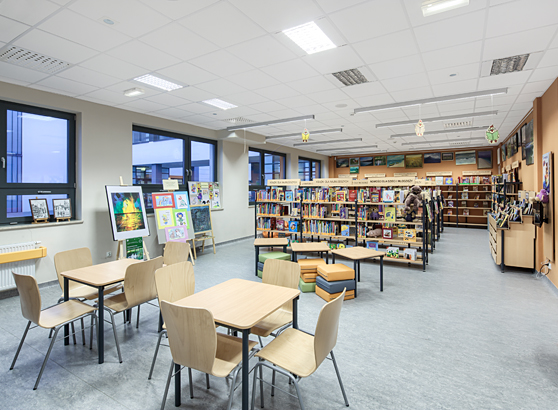 |
In school like at an airport
Noise in schools negatively affects both hearing and cognitive abilities. Students talk loudly among themselves, shouting over one another. Teachers also have to raise their voices. Such situations, which are a daily reality in schools, can unfortunately dangerously increase noise levels to as much as 130 dB, which is roughly equivalent to the noise emitted by a starting jet plane or a motorcycle without a muffler! Measurements of sound pressure levels (LAeq) in schools have shown the following values:| Gymnasium | 75-88 dB(A) - depending on the nature of the teaching |
| Hallway | 81-87 dB(A) |
| Cafeteria | 85-86 dB(A) |
| School Club | 79-81 dB(A) |
Peak sound pressure levels (LCpeak) reached the following values:
| Gymnasium and hallway |
115 dB(C) |
| Cafeteria | 110 dB(C) |
| School Club | 105 dB(C) |
In contrast, WHO recommends that the sound intensity in the environments we occupy during the day be at a level of 50 dB.
 |
Where does such noise come from?
School is a working environment and a place where education takes place. The essence of education is the transmission of knowledge through verbal communication. The speed at which this knowledge is acquired depends on the intelligibility of speech, which is influenced by the teacher, background noise (level of disturbing sounds), and the acoustic properties of the space.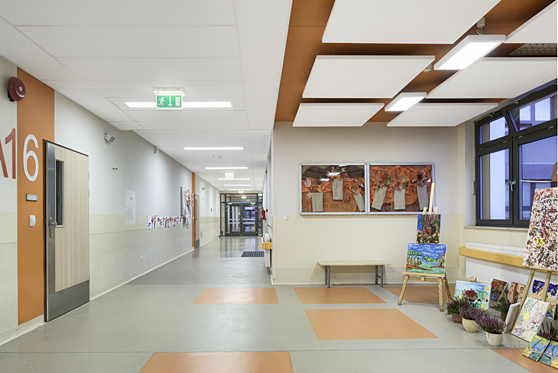 |
Students and teachers suffer
If the background noise level is too high, we communicate at a higher volume, which leads to excessive strain on the vocal apparatus and a number of ailments diagnosed in this professional group, such as hyperfunctional dysphonia or vocal nodules. Up to half of teachers complain about voice problems that are a consequence of the noise level in classrooms. Researchers from the School of Architecture and Building Research at Heriot-Watt University in Edinburgh demonstrated in their research project "Speech Intelligibility in Classrooms" that students do not hear up to 70% of the consonants that teachers pronounce in schools. How can this be prevented?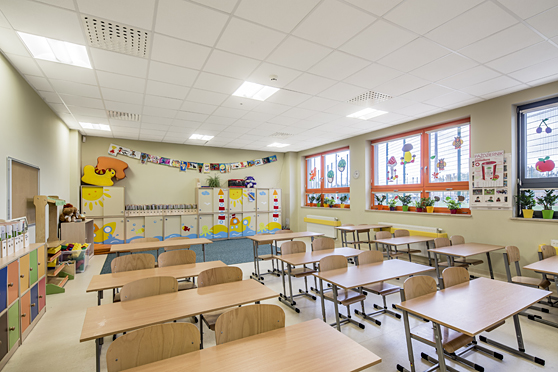 |
Acoustic corrections can help
- Improving the acoustic environment in the room can be achieved through acoustic corrections using sound-absorbing materials. These materials reduce the reverberation time, making the room quieter and the transmitted information more intelligible. Therefore, the teacher does not have to raise their voice, and students hear better - says Igor Slávik, an expert from Rockfon.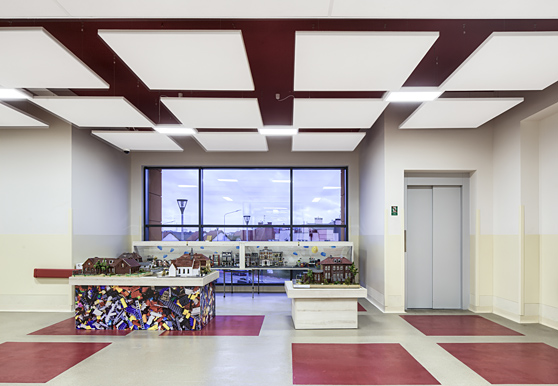 |
What should a classroom look like?
One of the most effective methods to reduce noise and improve speech intelligibility is the use of stone wool acoustic ceilings, which can be used in both newly constructed schools and existing buildings.Existing buildings:
- For existing buildings, we especially recommend ROCKFON® Koral Activity 40 mm boards in combination with Koral Tenor or Sonar Activity 40 mm in combination with Sonar Bas. These boards are attached to the existing ceiling using adhesive. It is not necessary for them to cover the entire ceiling area; selected parts are sufficient, and they do not have to be joined at the seams. This way, it is possible to avoid pre-installed lighting fixtures, smoke detectors, and other installation elements. This method can achieve a very modern visual effect and improve the spatial acoustic quality of the environment: noise reduction and improvement of speech intelligibility. Another advantage of such renovations is that installation work can be done in the afternoon without the need to take rooms out of operation - states Igor Slávik.Buildings under construction:
In the case of new buildings, the only limitations are the budget and the vision of the project author. What should be considered when selecting acoustic materials for newly created schools? It is necessary to ensure that the sound absorption coefficient is not less than 0.9.The sound absorption coefficient α is a fundamental parameter determining the sound absorption capability of building products. Its values range from 0 to 1. A value of 1 means that the sound has been completely absorbed, and a value of 0 means that it has been totally reflected. - In accordance with the international standard ISO 11654, sound absorption is described using five classes of absorption, marked by the symbols A to E. Many Rockfon products have the highest sound absorption class A. Acoustic ceilings for schools must also be characterized by impact resistance and ease of cleaning - depending on the intended use. All these requirements are met by stone wool solutions - adds the expert.
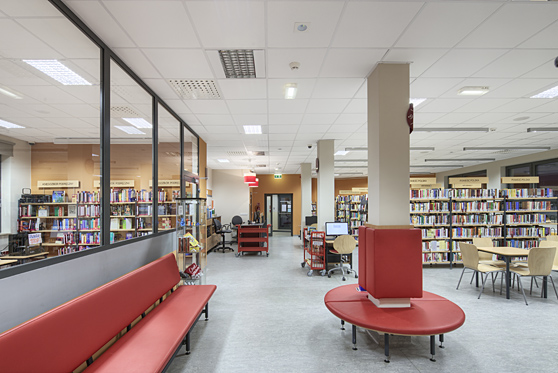 |
For more information, visit www.rockfon.cz
The English translation is powered by AI tool. Switch to Czech to view the original text source.
0 comments
add comment
Related articles
0
17.09.2018 | Referencebook - 6 Top Ceiling Design Solutions
0
19.06.2018 | Art enters the underground
0
21.05.2018 | Creating the Perfect Office – Why Acoustics Matter So Much
0
11.09.2017 | New ceilings in older houses
0
24.01.2017 | Good acoustics is half health
0
07.11.2016 | New ceilings with Scandinavian design
0
12.07.2016 | The beauty of monolithic ceilings












